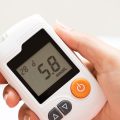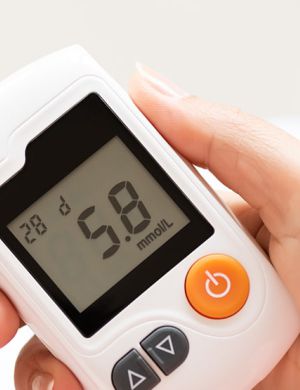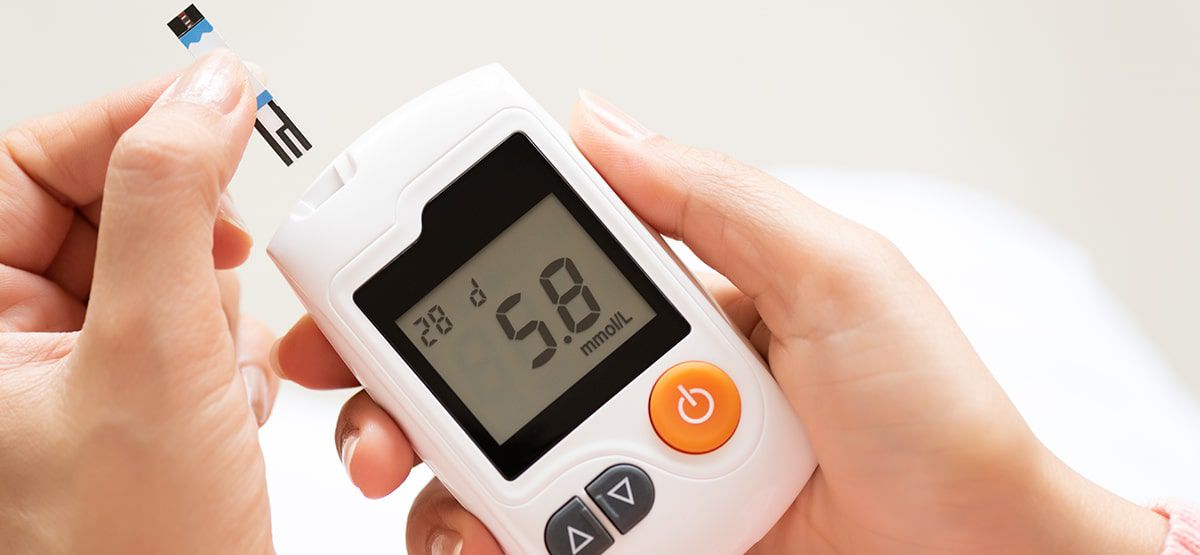
Cybersecurity in Medical Devices: Protecting Patient Data and Ensuring Safety
In today’s digital-first world, technology has taken center stage in transforming how healthcare operates. From wearable fitness trackers to life-saving implantable pacemakers, medical devices are now smarter and more interconnected than ever. But with innovation comes vulnerability – particularly when it comes to cybersecurity. Imagine a hacker tampering with a heart monitor or stealing sensitive patient data from an insulin pump. That’s not sci-fi – it’s a very real threat.
Cybersecurity in medical devices isn’t just a tech issue – it’s a patient safety issue. Every time you visit a hospital, undergo a diagnostic test, or rely on a monitoring device at home, your data is being collected, transmitted, and stored. If this data is not protected, it can be intercepted, manipulated, or stolen, leading to dangerous consequences. This makes cybersecurity not just a technical challenge but a matter of life and death.
This blog dives deep into the complexities and significance of cybersecurity in medical devices. We’ll cover what’s at stake, the types of threats out there, and how industry stakeholders are responding to ensure both data privacy and patient safety are never compromised.
What Are Medical Devices?
Medical devices cover a wide spectrum – from simple thermometers to advanced AI-driven imaging systems. The U.S. Food and Drug Administration (FDA) defines a medical device as any instrument, apparatus, implement, machine, or implant that is intended for use in the diagnosis, prevention, or treatment of a disease or other condition.
Today, a significant number of these devices are digitally connected. Whether it’s through Bluetooth, Wi-Fi, or cellular networks, they often transmit real-time data to healthcare providers, enabling quicker diagnostics and continuous patient monitoring. These connections, however, open the door to cybersecurity threats if not properly secured.
Common examples of connected medical devices include:
- Insulin pumps
- Cardiac pacemakers
- Infusion pumps
- MRI and CT scanners
- Wearable health monitors (e.g., smartwatches with ECG)
- Remote patient monitoring systems
The advancement of the Internet of Medical Things (IoMT) means these devices are part of a complex healthcare ecosystem. Each connection point is a potential vulnerability that could be exploited by cybercriminals.
Why Is Cybersecurity in Medical Devices Important?
Think about this: What happens if a hacker gains access to a medical device that controls a person’s heartbeat? What if personal health information (PHI) is leaked to unauthorized parties? The risks are profound – ranging from privacy violations to life-threatening scenarios.
Here’s why cybersecurity in medical devices is absolutely critical:
Protecting Patient Data
Healthcare data is one of the most sensitive forms of personal information. It includes not just names and addresses, but also diagnoses, treatments, medications, and even genetic profiles. Hackers can exploit this data for identity theft, insurance fraud, or blackmail. Medical records are far more valuable on the dark web than credit card information.
Ensuring Device Functionality
A compromised device may malfunction, provide inaccurate readings, or even shut down. This can lead to delayed diagnoses, incorrect treatments, or fatal errors. In critical care situations, these failures could be disastrous.
Maintaining Trust in Healthcare Systems
Patients need to trust that the systems managing their care are safe. A high-profile breach can erode public confidence in hospitals, manufacturers, and the broader healthcare system. Once that trust is lost, it’s hard to regain.
Cybersecurity in medical devices is not just about ticking a compliance box – it’s a fundamental part of delivering safe, effective healthcare in the digital age.
Types of Medical Devices Vulnerable to Cyberattacks
Not all medical devices are created equal in terms of cybersecurity risk. The level of vulnerability depends on how the device is connected, the type of data it handles, and whether it performs critical life-sustaining functions. Here’s a breakdown of the most at-risk categories:
1. Implantable Devices
Devices like pacemakers, defibrillators, and neurostimulators that are implanted in the body are at high risk. If remotely controlled or updated, they could be targeted for interference, potentially endangering the patient’s life.
2. Infusion and Insulin Pumps
These devices regulate the delivery of medications like insulin or painkillers. Hackers can potentially alter dosage settings, leading to overdoses or insufficient treatment.
3. Imaging and Diagnostic Machines
MRI, CT, and X-ray machines are often networked within a hospital’s IT system. A breach here could expose large volumes of PHI or interrupt essential diagnostic services.
4. Wearable and Remote Monitoring Devices
Fitness trackers, ECG monitors, and blood pressure monitors that sync data to apps or hospital systems are often designed with convenience in mind – sometimes at the expense of robust cybersecurity.
5. Hospital Equipment Connected to Networks
Ventilators, anesthesia machines, and patient monitoring systems often connect to hospital networks. If one of these is compromised, it could serve as a gateway to the entire IT system of a healthcare facility.
Each of these device categories must be assessed for cybersecurity risks – not just when they’re made, but throughout their lifecycle.
Real-World Cybersecurity Incidents in Medical Devices
While it might sound like the plot of a thriller, cybersecurity attacks on medical devices have already happened – and the implications are sobering.
1. The Johnson & Johnson Insulin Pump Warning (2016)
Johnson & Johnson sent a warning to patients using one of its insulin pumps, advising them of a potential cybersecurity vulnerability. Hackers could potentially tamper with the device’s wireless connection and deliver unauthorized insulin doses. Although no incidents occurred, the risk was real enough to warrant an official alert.
2. St. Jude Medical Pacemaker Recall (2017)
The FDA and St. Jude Medical (now part of Abbott) issued a recall for nearly half a million pacemakers. Why? Because they lacked proper encryption, allowing hackers to potentially take control of the devices. The software had to be patched to prevent possible exploitation.
3. WannaCry Attack on UK’s NHS (2017)
This ransomware attack disrupted more than 80 hospitals and clinics in the UK, rendering many devices and IT systems inoperable. While not directly aimed at medical devices, the incident exposed just how vulnerable interconnected healthcare systems can be.
4. Medtronic’s Defibrillator Risk (2019)
The FDA issued a warning about certain Medtronic cardiac devices that could be accessed wirelessly without authorization. The concern was so serious that doctors were urged to stop using specific remote monitoring systems.
These examples show that medical device cybersecurity isn’t theoretical – it’s happening now. As devices become more connected, the risks will only grow if proactive steps aren’t taken.
How Cyber Threats Impact Patient Safety
Cyberattacks on medical devices aren’t just about data theft – they can directly threaten a patient’s well-being. When a device that monitors or supports a vital function is compromised, it can lead to delayed treatment, misdiagnosis, or even physical harm.
Interruption of Critical Services
Picture this: a hospital’s central monitoring system is hacked during surgery. The anesthesiologist can no longer track the patient’s vital signs. Even a few seconds of blind spots could result in severe complications. Cyberattacks that cause device downtime interrupt care and can create chaos in emergency settings.
Manipulation of Device Behavior
Hackers don’t need to shut devices down completely – sometimes, subtle manipulations are worse. For instance, a slight tweak in insulin pump dosage or pacemaker pulse can slowly deteriorate a patient’s health. Such alterations may go undetected until serious harm has already occurred.
Psychological Stress on Patients
Even if a cyberattack doesn’t lead to physical damage, it can cause psychological distress. Patients reliant on devices for life support or monitoring may develop anxiety if they believe their device can be tampered with. This stress may impact recovery and overall quality of life.
Delayed Response and Incident Recovery
Hospitals need protocols in place to respond quickly to breaches. However, cyberattacks often cause confusion and delay decision-making. The longer a system remains compromised, the greater the risk to patients under care. Sometimes, even backups aren’t updated frequently enough to restore devices to their original state.
The truth is, cybersecurity isn’t a separate department’s concern – it’s a core part of patient safety. Hospitals and manufacturers must view it through this lens and prioritize it accordingly.
Common Cybersecurity Threats in Medical Devices
Medical devices face a variety of threats, many of which mirror those in other tech-driven sectors – but with far more severe consequences. Understanding these threats helps stakeholders design better protections.
Ransomware Attacks
Ransomware locks out users and demands payment to restore access. In a hospital, this can paralyze everything from diagnostic imaging to ventilators. Devices may stop functioning or collect inaccurate data, and care delivery is delayed until the system is restored.
Man-in-the-Middle (MitM) Attacks
In these attacks, hackers intercept communication between a device and the server it’s connected to. This could allow them to alter data in transit – potentially changing dosage instructions or sensor readings without anyone knowing.
Malware Infections
Malicious software can enter medical systems through email attachments, USB ports, or unsecured wireless networks. Once inside, malware can hijack device functionality, steal patient data, or open backdoors for future attacks.
Denial of Service (DoS) Attacks
DoS attacks overwhelm a device or network, rendering it unavailable. If hackers launch such an attack on a hospital’s wireless network, connected devices might fail to transmit data – disrupting patient monitoring or alerts.
Unauthorized Access
This can occur if devices lack strong passwords or if hospital staff reuse login credentials. Hackers may gain administrative access and change configurations, disable alerts, or retrieve patient data without detection.
Medical devices, often in use for over a decade, may not be designed to withstand today’s advanced threats. That’s why understanding specific vulnerabilities and mitigating them proactively is so important.
Regulations and Compliance: FDA and Global Guidelines
Governments and regulatory agencies are increasingly aware of the risks cybersecurity poses in healthcare. To tackle these risks, bodies like the FDA, European Medicines Agency (EMA), and others have laid out rules and guidelines for manufacturers and providers.
FDA Guidelines (USA)
The FDA has issued several key documents addressing medical device cybersecurity, including:
- Pre-market Submission Guidelines: Require manufacturers to demonstrate how cybersecurity was considered during design.
- Post-market Management Guidelines: Urge ongoing monitoring of cybersecurity threats and timely software updates.
- Medical Device Cybersecurity Playbook: Offers best practices for healthcare delivery organizations.
In 2022, the FDA introduced new regulations requiring “cybersecurity information” in device approval submissions, signaling a more proactive stance.
European Union Regulations
Under the EU MDR (Medical Device Regulation), cybersecurity is now a component of the safety and performance requirements. Devices must be protected against unauthorized access, and manufacturers must report incidents involving data breaches or system failure.
Other Global Standards
- ISO/IEC 80001 focuses on risk management of IT networks with medical devices.
- NIST Cybersecurity Framework provides voluntary guidelines to manage cybersecurity risks across industries, including healthcare.
Compliance isn’t just a box-ticking exercise – it’s a strategy to prevent disasters. Manufacturers must work with cybersecurity experts from the earliest stages of device design to ensure long-term resilience.
Role of Manufacturers in Device Security
The responsibility for securing medical devices begins with the manufacturers. From design to deployment, every phase presents opportunities – and obligations – for building strong defenses.
Security by Design
Manufacturers should adopt a “security by design” mindset, embedding protection mechanisms from the ground up. This includes:
- Data Encryption for both storage and transmission.
- Authentication Controls to prevent unauthorized access.
- Audit Logs to detect and trace breaches.
- Resilience Mechanisms to ensure continuity in the event of failure.
Ignoring cybersecurity during development often leads to costly recalls or software patches later, which also undermine consumer confidence.
Ongoing Risk Assessment
Manufacturers must regularly perform risk assessments and threat modeling. This isn’t a one-and-done task – cyber threats evolve. A device safe in 2020 may be vulnerable in 2025.
Patch and Update Mechanisms
Devices must be designed to receive secure updates without interrupting critical functions. That means remote update capabilities, rollback options, and the ability to notify users when new firmware is available.
User Training and Documentation
Device manuals should educate healthcare providers on cybersecurity best practices – how to change default settings, recognize intrusion attempts, and respond to unusual device behavior.
In short, manufacturers are the first line of defense. Their choices can mean the difference between a secure, life-saving tool and a digital liability.
Security Best Practices in Design and Development
Designing secure medical devices isn’t just about code – it’s about mindset. Building cybersecurity into the development lifecycle ensures vulnerabilities are addressed before the device hits the market.
Adopt a Secure Development Lifecycle (SDLC)
From conception to deployment, an SDLC integrates security at each phase:
- Requirements Analysis – Define security needs upfront.
- Design – Architect for isolation, access control, and data privacy.
- Implementation – Use secure coding practices to prevent common flaws.
- Testing – Conduct penetration testing and fuzz testing.
- Deployment – Configure devices securely out of the box.
- Maintenance – Plan for regular updates and threat monitoring.
Principle of Least Privilege
Devices and users should have only the permissions needed to perform their tasks – nothing more. This limits the damage if a hacker gains access.
Default Deny Settings
Devices should not allow open ports, unsecured connections, or weak credentials by default. Every feature enabled must be explicitly justified and secured.
Multi-Factor Authentication (MFA)
Adding a second layer of login verification can deter unauthorized access. Especially for devices that communicate wirelessly or through hospital networks, MFA is a must.
End-to-End Encryption
Data must be encrypted at rest and in transit. This ensures that even if data is intercepted, it remains unreadable.
Security isn’t an afterthought – it’s a design feature. And for medical devices, it could mean the difference between saving lives and endangering them.
Healthcare Providers’ Responsibility in Cybersecurity
While manufacturers play a critical role, healthcare providers are equally responsible for ensuring cybersecurity doesn’t fall through the cracks. After all, even the most secure device can be compromised if it’s used carelessly in an insecure environment.
Proper Device Integration
Hospitals and clinics must integrate medical devices securely into their IT infrastructure. This includes assigning devices to secure networks, setting up firewalls, and segmenting sensitive areas to contain potential breaches.
Regular Software and Firmware Updates
Outdated software is one of the most common points of exploitation. Providers must ensure that all connected devices are regularly updated. These updates should be sourced from verified vendors and installed using secure protocols.
Staff Training and Awareness
Many cybersecurity breaches result from human error – clicking malicious links, using weak passwords, or mishandling sensitive information. Staff should be regularly trained to:
- Recognize phishing attempts
- Securely log in and out of devices
- Avoid using personal USBs or mobile phones with hospital systems
- Report suspicious activity immediately
Access Control Management
Not everyone in a hospital should have the same level of access. Role-based access controls ensure that only authorized personnel can interact with critical devices or sensitive data. Biometric and badge-based systems can enhance this further.
Healthcare providers are the frontline defenders in this war on cyber threats. Through diligence and training, they can drastically reduce the risk of attacks and improve patient safety.
The Role of Software and Firmware Updates
Updating software and firmware in medical devices is like giving them a digital immune system boost. It’s not just about adding new features – it’s often a matter of patching vulnerabilities before attackers can exploit them.
Why Updates Matter
Devices that aren’t updated are sitting ducks. Hackers often reverse-engineer known vulnerabilities and use automated tools to target unpatched systems. A simple delay in updating firmware could expose critical patient data or device functions.
Update Methods
There are three primary ways updates are deployed:
- Manual Updates: Performed by IT personnel or healthcare workers. These are time-consuming and prone to human error.
- Remote Updates: Delivered over the internet by the manufacturer. These are faster but require strong security measures to prevent tampering.
- Over-the-Air (OTA) Updates: Used by wearables and implantables, enabling seamless updates without medical visits.
Security Considerations During Updates
- Encrypted Updates: Ensures the update file hasn’t been altered.
- Signed Firmware: Verifies the update comes from a trusted source.
- Rollback Mechanism: Allows the device to revert to a previous stable version if an update fails.
Manufacturers and healthcare providers must work together to establish clear protocols for timely and secure updates. Patients should also be informed when updates are required and how they will impact the device.
Challenges in Implementing Cybersecurity in Medical Devices
Despite its importance, implementing cybersecurity in medical devices is easier said than done. There are multiple roadblocks – technical, financial, and logistical – that make this a complex puzzle.
Legacy Systems
Many hospitals still use devices that are over a decade old. These devices weren’t built with modern cyber threats in mind and often can’t be updated easily. Replacing them is expensive and disruptive, leaving facilities stuck with vulnerable tools.
Cost Constraints
Developing secure systems is more expensive. Manufacturers need to invest in secure design, testing, compliance, and ongoing support. Hospitals also need to allocate budgets for cybersecurity staff, training, and infrastructure – something that’s often overlooked.
Device Lifecycle Management
Medical devices are used over long periods, sometimes 10–15 years. Keeping cybersecurity practices up-to-date throughout the lifecycle is challenging. Vendors might stop supporting older devices, leaving them exposed.
Regulatory Hurdles
As rules evolve, manufacturers must adapt, often retroactively applying new standards to older models. Meeting these regulations while staying innovative can be a delicate balancing act.
Data Privacy vs. Functionality
In some cases, making a device more secure can limit its functionality or user-friendliness. Striking the right balance between robust security and usability is a recurring challenge in healthcare technology.
Solving these problems requires a collaborative effort from regulators, manufacturers, hospitals, and even patients. It’s not just about preventing breaches – it’s about creating a sustainable, secure healthcare ecosystem.
Future Trends in Medical Device Cybersecurity
As technology evolves, so too will the threats – and the defenses. The future of medical device cybersecurity lies in proactive, AI-driven, and fully integrated systems that prevent issues before they arise.
AI and Machine Learning
Artificial intelligence can detect unusual behavior in devices – like a sudden spike in data traffic or unauthorized access attempts. These systems learn over time and can automatically flag or even neutralize threats.
Blockchain for Data Integrity
Blockchain offers a tamper-proof method of recording medical device data. It ensures data isn’t altered or erased without authorization, making it ideal for maintaining secure health records and audit trails.
Zero Trust Architecture
This model assumes that no user or device should be trusted by default – even those within the organization. Implementing zero trust means continuously verifying every connection request, adding layers of protection.
Biometric Authentication
Passwords are outdated. Future devices may use fingerprint, retina, or even behavioral biometrics to verify users, making it nearly impossible for hackers to gain unauthorized access.
Cybersecurity as a Service (CaaS)
Startups and third-party vendors are now offering continuous cybersecurity monitoring and threat management services tailored specifically for healthcare systems.
These trends point to a smarter, safer future where cybersecurity is no longer reactive – it’s baked into every interaction, from device design to daily patient care.
Conclusion
Medical devices are becoming smarter, more connected, and more integral to patient care than ever before. But this evolution brings with it a massive responsibility – to protect the devices and the people who rely on them.
Cybersecurity in medical devices is not optional; it’s a foundational element of modern healthcare. The threats are real and growing, but so are the solutions. Manufacturers, healthcare providers, regulators, and patients must all play their part.
By embedding security into every layer – from design to deployment – we can ensure that innovation continues to serve us without putting lives or privacy at risk. The path forward may be complex, but with vigilance and collaboration, we can create a future where medical technology is both advanced and secure.
Don’t miss out! Click here to stay in touch.
Categories
- Biopharma (58)
- Consumer Health (21)
- Cosmetics (11)
- Diagnostics (5)
- Digital Health (8)
- Food (2)
- Medical Device (112)
- OTC (5)
- Regulatory Intelligence (13)
- Standards (41)
Recent Blogs
Get the latest updates from Vistaar

Related Posts
CONNECT WITH US

Let's talk about how Vistaar can help you




